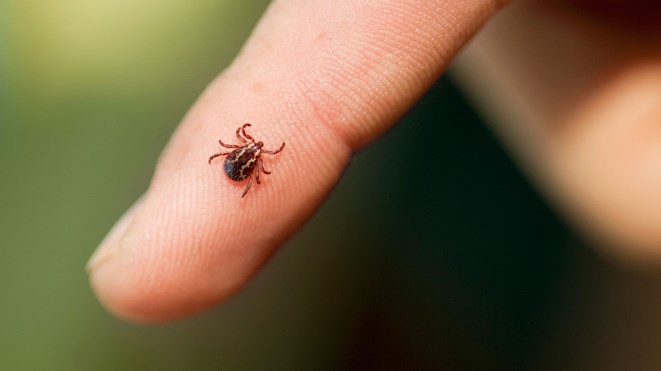Tick populations in Wellington County have been expanding over the last decade due to a number of factors including climate change and urbanization.
While not all ticks pose a health threat, research from the University of Guelph and Health Canada shows that blacklegged ticks, the species responsible for spreading Lyme disease, are spreading across eastern and central Canada. Puslinch, the southern part of Wellington County, has been deemed a high-risk area.
We spoke to experts at Wellington-Dufferin-Guelph Public Health about what people should know about increased tick populations and how they can protect themselves.
What is a blacklegged tick?
Blacklegged ticks (also known as deer ticks) are parasitic animals that find hosts in animals and humans. They are a dark, reddish-brown colour and slightly resemble an apple seed. They feed on a host’s blood with their sharp mouthparts. Blacklegged ticks can be found throughout Ontario in forested areas, but birds can carry and drop them almost anywhere. They do not fly or jump, but instead rest on low-growing vegetation such as grasses or shrubs, where they can easily latch onto a host. Ticks are not considered insects and they can spread Lyme Disease.
What is Lyme Disease?
Unlike other species of ticks, blacklegged ticks can carry Lyme Disease, which is a highly debilitating infection with physical and psychological symptoms. The disease is caused by a bacterium called Borrelia burgdorferi, which is transmitted from infected ticks to humans. The bacteria exist in small mammals and birds and are acquired by blacklegged ticks when they feed on these infected animals. Once infected, only adult females and those in the nymph stage are capable of transmitting the disease through their saliva when they latch onto a host.
Symptoms of Lyme Disease include a bulls-eye-shaped rash, fever, chills, headache and swollen lymph nodes. Dogs and other pets can also contract Lyme Disease and present similar symptoms.
Learn more about Lyme Disease symptoms here.
How can people stay safe from tick bites?
The most important way to reduce your risk of contracting Lyme Disease is by reducing your exposure to blacklegged ticks. This can be done by:
-
Avoiding known tick habitats. Blacklegged ticks thrive in grassy, wooded areas like forests, trails and parks.
-
Using a repellent like DEET, Icaridin, or permethrin-impregnated clothing
-
Conducting a thorough tick check after being in tick habitats
What should people do if they are bitten by a tick?
If you are exposed to a tick, carefully remove it lengthwise from its head to backside with tweezers. If possible, keep it or take a photo and then submit it to WDG Public Health through their eTick identification platform or by emailing it to [email protected]. Public health experts will be able to properly identify it, determine if you are at risk for Lyme Disease and offer further health advice.
What should they NOT do?
-
Flick or scratch an attached tick
-
Use petroleum jelly, heat, essential oils or nail polish to remove a tick, as they take too long to work
-
Remove a tick while holding it around the middle (abdomen). This could cause the tick to break, leaving its mouthparts attached to the skin.
-
Burn an attached tick
WDG Public Health recommends that the public be highly vigilant when it comes to ticks by taking steps to prevent exposure and report any sightings and possible infections.
For more information about tick safety, visit the WDG Public Health website.


